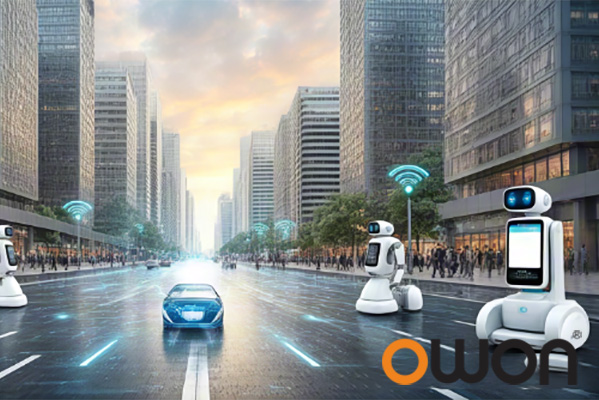IoT Transforming Life and Industries: Technology Evolution and Challenges in 2025
As machine intelligence, monitoring technologies, and ubiquitous connectivity deeply integrate into consumer, commercial, and municipal device systems, IoT is redefining human lifestyles and industrial processes. The combination of AI with massive IoT device data will accelerate applications in cybersecurity, education, automation, and healthcare. According to the IEEE Global Technology Impact Survey released in October 2024, 58% of respondents (double the previous year) believe AI—including predictive AI, generative AI, machine learning, and natural language processing—will be the most influential technology in 2025. Cloud computing, robotics, and extended reality (XR) technologies follow closely. These technologies will synergize deeply with IoT, creating data-driven future scenarios.
IoT Challenges and Technology Breakthroughs in 2024
Semiconductor Supply Chain Restructuring
Asia, Europe, and North America are building local semiconductor supply chains to shorten delivery times and avoid pandemic-level shortages, promoting global industrial diversification. New chip factories launching over the next two years are expected to relieve supply pressure for IoT applications.
Supply and Demand Balance
By the end of 2023, excess chip inventory due to supply chain uncertainty had been depleted, and 2024 saw overall price and demand increases. If no major economic shocks occur in 2025, semiconductor supply and demand should be more balanced than in 2022-2023, with AI adoption in data centers, industrial, and consumer devices continuing to drive chip demand.
Generative AI Rational Reassessment
IEEE survey results show that 91% of respondents expect generative AI to undergo a value reassessment in 2025, with public perception turning rational and clearer expectations around boundaries like accuracy and deepfake transparency. While many companies plan AI adoption, large-scale deployment may slow temporarily.
AI and IoT Integration: Risks and Opportunities
Cautious adoption may affect AI applications in IoT. Using IoT device data to build models and deploying them at the edge or on endpoints could enable highly efficient scenario-specific applications, including models that learn and optimize locally. Balancing innovation and ethics will be a key challenge for the co-evolution of AI and IoT.
Key Drivers of IoT Growth in 2025 and Beyond
Artificial intelligence, new chip designs, ubiquitous connectivity, and decoupled data centers with stable pricing are the primary growth drivers for IoT.
1. More AI-Driven IoT Applications
IEEE identifies four potential AI applications in IoT for 2025:
-
Real-time cybersecurity threat detection and prevention
-
Supporting education, such as personalized learning, intelligent tutoring, and AI-driven chatbots
-
Accelerating and assisting software development
-
Improving supply chain and warehouse automation efficiency
Industrial IoT can enhance supply chain sustainability using stronger monitoring, local intelligence, robotics, and automation. Predictive maintenance driven by AI-enabled IoT devices can improve factory productivity. For consumer and industrial IoT, AI will also play a critical role in privacy protection and secure remote connectivity, supported by 5G and wireless communication technologies. Advanced IoT applications may include AI-driven digital twins and even direct brain-computer interface integration.
2. Broader IoT Device Connectivity
According to IoT Analytics’ Summer 2024 State of IoT Report, over 40 billion connected IoT devices are expected by 2030. The transition from 2G/3G to 4G/5G networks will accelerate connectivity, but rural areas may rely on lower-performance networks. Satellite communication networks can help bridge the digital divide but are limited in bandwidth and can be costly.
3. Lower IoT Component Costs
Compared to most of 2024, memory, storage, and other key IoT components are expected to remain stable or even decrease slightly in price in 2025. Stable supply and lower component costs will accelerate IoT device adoption.
4. Emerging Technology Developments
New computing architectures, chip packaging, and non-volatile memory advancements will drive IoT growth. Changes in data storage and processing at data centers and edge networks will reduce data movement and power consumption. Advanced chip packaging (chiplets) allows smaller, specialized semiconductor systems for IoT endpoints and edge devices, enabling more efficient device performance at lower power.
5. System Decoupling for Efficient Data Processing
Decoupled servers and virtualized computing systems will improve data processing efficiency, reduce power consumption, and support sustainable IoT computing. Technologies like NVMe, CXL, and evolving computer architectures will lower online costs for IoT applications.
6. Next-Generation Chip Designs and Standards
Chiplets allow separation of CPU functionalities into smaller chips connected in a single package. Standards like Universal Chiplet Interconnect Express (UCIe) enable multi-vendor chiplets in compact packages, driving specialized IoT device applications and efficient data center and edge computing solutions.
7. Emerging Non-Volatile and Persistent Memory Technologies
Decreasing prices and increased density of DRAM, NAND, and other semiconductors reduce costs and improve IoT device capabilities. Technologies like MRAM and RRAM in consumer devices (e.g., wearables) allow more low-power states and longer battery life, particularly in energy-constrained IoT applications.
Conclusion
Post-2025 IoT development will be characterized by AI deep integration, ubiquitous connectivity, affordable hardware, and continuous architectural innovation. Technological breakthroughs and industrial collaboration will be key to overcoming growth bottlenecks.
Post time: Nov-13-2025
